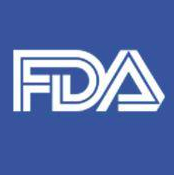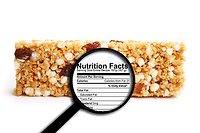FDA’s Perspective on Food Safety and Availability During and Beyond COVID-19

The U.S. Food and Drug Administration (FDA) has been assuring the American public that there is no nationwide shortage of food, that local outages of certain products are the result of unprecedented demand during the COVID-19 pandemic.
At the same time, there are reports of food plants closing because of illnesses and farmers dumping milk and plowing under crops because their customers, including restaurants and schools, have been closed by social distancing mandates. Will these actions lead to food shortages?
And the FDA has been assuring the American public that the food supply is safe. At the same time, routine surveillance inspections of farms and food facilities have been postponed. So, how does the agency know that food is safe?
Frank Yiannas, FDA’s Deputy Commissioner for Food Policy and Response, answers these and other questions about the state of the U.S. food supply, both now and beyond this public health crisis.
Q: I’m still seeing empty store shelves more than a month after the pandemic started changing our lives. How can you say there are no shortages?
I understand the concerns because I’ve seen the same thing when I go to my local grocery store with foods like flour, pasta and some canned goods. These shortages are temporary because of unprecedented consumer demand, not a lack of the food system’s ability to produce, process and deliver food. The same thing happened with pet food and, in some cases, food for livestock.
The typical grocery store today can carry over 50,000 different food products. And while there are reported outages in some stores of select products, the reality is that most of the food items you typically find in a grocery store remain there.
The retail supply chain remains strong. For those products that have been out of stock, manufacturers and retailers of both human and animal foods are working around the clock to replenish shelves. And we are working closely with the food industry to monitor for disruptions in the supply chain that could cause shortages and to work on solutions to help avoid that.
I know these are uncertain times. But we continue to advise consumers that there is no need to buy more food than you need for a week or two for your family and pets and to leave some for others.
Q: With meat processing plants closing down, what does this mean for food safety? Are foods that have entered the market from those plants safe?
I want to reassure you that the U.S. food supply remains safe for both people and animals. There is NO evidence of food or food packaging being associated with transmission of COVID-19. The virus that causes COVID-19 causes respiratory illnesses and is much more likely to be spread through person-to-person transmission.
I am aware that some processing plants closed when employees tested positive for COVID-19. However, because of the way the virus is transmitted, we do not anticipate that food products would need to be recalled or be withdrawn from the market if a person who works on a farm or in a food facility tests positive for COVID-19.
Q: With the plant closures and farmers plowing under their crops, are there food shortages on the horizon?
The U.S. Department of Agriculture and FDA are working closely with federal partners and the food industry to monitor the supply for nation-wide and regional shortages, which we are not seeing now. It is important to remember that food production and manufacturing are widely dispersed throughout the United States. If one facility closes, there are other facilities that manufacture the same type of product that can help fill the demand.
There has been a lot of wasted food because the pandemic has temporarily, but significantly, disrupted the marketplace. Restaurants, hotels, schools and other entities that purchased food from farms and facilities have had to close their dining facilities. The reports of milk being dumped, and fields being plowed over are due to this imbalance in the food supply chain. Farmers and manufacturers are working to change their normal distribution channels to redirect foods that would normally be destined for use at restaurants and other retail operations for sale within grocery stores.
While many are watching and thinking about food plant closures in terms of human food, we recognize that many of them also produce by-products that enter the animal food supply chain. We are closely following these situations to monitor the impacts on animal food, too.
Q: What is FDA doing to help divert this excess food directly to consumers?
There is plenty of food; it’s just not in all the right places based on disruptions to supply chains and markets. For example, flour that is in short supply in five-pound bags at the grocery store may be available to restaurants and bakeries in 50-pound bags. We are having conversations now with federal partners and industry stakeholders, including food banks, to do all that we can to help ensure that safe and available food doesn’t go to waste.
Further, FDA has taken steps to provide flexibility with packaging and labeling requirements in an effort to reduce food waste in these difficult times. We have released guidance documents to help clear the path to the retail market for certain foods. These include providing restaurants and food manufacturers with flexibility regarding nutrition and menu labeling, as well as paving the way for shell eggs that would normally go to restaurants or for further processing to be sold directly to consumers by retail outlets.
In some cases, it may be possible to use excess foods to feed animals. FDA’s Center for Veterinary Medicine (CVM) has posted a guide for safely distributing unused human food for use in animal food.
I am grateful for all that the food industry is doing to supply safe and available food at this time. Having worked at the world’s largest retailer before coming to FDA, I know that our country’s food system is the best in the world.
Q: Turning to the larger issue of food safety, how do you know our food is safe if FDA and the states are not doing inspections of farms and food facilities?
Our food safety net remains strong. For the time being, we are not doing in-person routine surveillance inspections of farms and food facilities in this country and others that export foods to the United States. We are doing this to limit exposure to the virus and out of concern for the safety of FDA investigators, state inspectors, and the workers in these farms and facilities as people all over the world are sheltering in place.
However, we are still doing mission critical inspections when needed to protect public health. Such inspections could be necessitated by natural disasters, outbreaks of foodborne illness, Class 1 recalls and, in some cases, inspections at firms with a poor track record when it comes to food safety.
We have other tools and authorities to help ensure the safety of imported foods, including product examinations at the ports of entry and the use of PREDICT, our risk-based import screening tool to focus our examinations and sample collections.
And the FDA is conducting a limited number of remote inspections involving the electronic submission of records by importers covered by the Foreign Supplier Verification Programs (FSVP) requirements. We are prioritizing importers of food from foreign suppliers whose onsite food facility or farm inspections have been postponed due to COVID-19.
And last but not least, remember that FDA’s Food Safety Modernization Act (FSMA) changed the paradigm on food safety from detection to prevention. FDA-regulated facilities are required to have preventive controls in place each and every day to ensure that the foods they produce are safe. Industry has the primary responsibility to ensure the foods they produce are safe and by and large, they’re doing an amazing job at providing safe and available food to consumers. Clearly, at this critical time, food safety is as important as it has ever been, and we expect food producers to redouble their food safety efforts.
Q: Are you still on the lookout for outbreaks of foodborne illness?
Absolutely. FDA’s Coordinated Outbreak Response and Evaluation (CORE) Network is fully staffed and on the job looking for signs of foodborne illness outbreaks. CORE works with the Centers for Disease Control and Prevention (CDC) and other partners in local, state and federal government to protect consumers from contaminated foods.
Our Center for Veterinary Medicine is also fully staffed to respond to complaints and incidents of foodborne illness in animals.
Q: What about the FDA Food Safety Modernization Act (FSMA)? Are you still implementing that considering all the other demands on FDA’s time and resources?
Most of the compliance dates have arrived for the major FSMA rules that put science and risk-based controls in place for the growing, production, packing, holding, transporting and importing of the foods that American consumers serve their families and feed their animals. Some inspections are temporarily on hold, but the food industry is still required to meet these requirements – that has not changed. There are other provisions we’re still working on to make them as effective as possible, such as the agricultural water quality and testing standards, and those efforts continue.
Again, I am so grateful that Congress passed FSMA because when it became law in 2011 it shifted FDA’s focus from reacting to foodborne illness outbreaks to putting safeguards in place that help prevent them. These protections are in place each and every day no matter what else is going on in the world.
Q: Before the pandemic, FDA was talking about a New Era of Smarter Food Safety. We were expecting a blueprint to have come out by now. Where does that stand?
We had planned to publish the New Era of Smarter Food Safety blueprint in March but had to shift our efforts to pandemic response. Just to backtrack a bit, the New Era is an initiative that FDA announced last year designed to create a more digital, traceable and safer food system. We want to leverage new technologies, analytical tools and approaches to keep foods safe in the midst of what I believe is a food revolution. Foods are being reformulated, new foods and new food production methods are being realized, and the food system is becoming increasingly digitized.
We have been working behind the scenes on the framework that will support this work going forward and will publish the blueprint when the time is right. But the issues and challenges we’ve seen in our pandemic response has shown me how timely this work is and how valuable it will be in the future.
For example, part of the New Era work involves dealing with the reality of e-commerce as more and more consumers order foods online that are delivered right to their door. We have been considering what steps we need to take to ensure the safety of those foods in how they are produced, packaged and transported. When we first started talking about this, we were anticipating that 20 percent of groceries would be ordered online by 2023. That benchmark may have been blown out of the water by consumers sheltering in place. I don’t see that trend reversing when the crisis has passed.
Another core element of the New Era plan is to foster and support food safety cultures on farms and in food facilities. We do not believe we will make dramatic improvements in reducing the burden of foodborne disease without addressing how employees think about food safety and how they demonstrate a commitment to this goal in how they do their job.
It’s clear to me that a food safety culture is also one that protects the employees from risks associated with workers who are sick, regardless of the type of virus or bacteria, and supports the maintenance of clean and sanitized facilities.
Q: Are there any lessons learned that will inform FDA’s work in the years to come?
Yes. I think health and safety are going to be even more important in the “new normal” that follows the pandemic. One aspect of this is that consumers are increasingly going to want to know more about their food – where it was grown or produced and what measures have been taken to ensure that it is safe for them to eat.
I also think some of the challenges we have been facing show the importance of having a dynamic, inter-operable, smarter food system that allows foods to be used when and where they are needed.
As part of our New Era of Smarter Food safety initiative, we want to enable a more digital, traceable food system. This type of food system will increase transparency and resiliency. For example, it could help us anticipate and prepare us to address the kind of supply-chain imbalances that we are seeing now.
This experience has also reinforced something I already knew – how important it is for government to work with the private sector. In speeches I usually end by saying that my years in the private sector taught me what industry can do to keep food safe. And my time at FDA has shown me how much government can do. But what is crystal clear to me, I’d conclude, is that we can do so much more together. The truth of that statement has really been brought home because we cannot get through a crisis of this magnitude without effective public-private partnerships.
Q: What do you want consumers to know about food safety in the long term?
We will get through this together and will be better, stronger, and more resilient than ever.
Looking for a reprint of this article?
From high-res PDFs to custom plaques, order your copy today!





